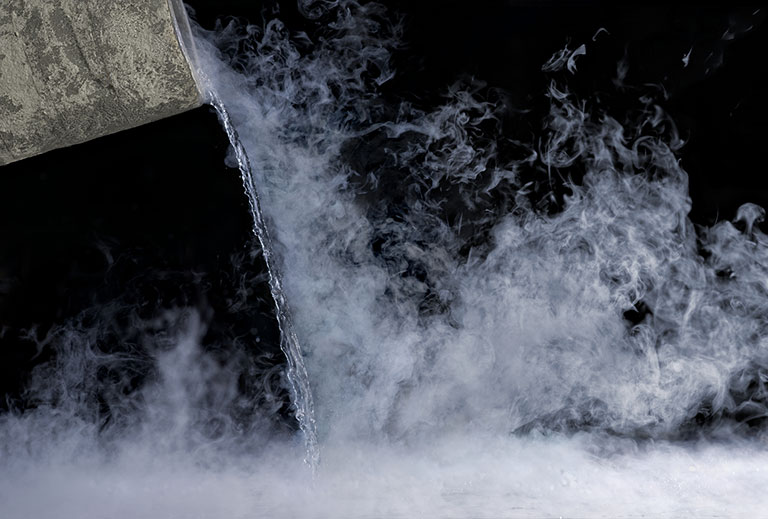Cryogenic freezing is an advanced technology that utilizes extremely low temperatures, typically below -150°C (-238°F), to preserve and maintain the integrity of materials over extended periods. This technique is fundamental in industries where the stabilization of biological materials, chemicals, and electronic components is crucial for further use or study. The ability to cool and maintain substances at such low temperatures has opened up numerous possibilities in medicine, space exploration, and even data storage technologies, providing the backbone for innovations that were once thought impossible.
The significance of cryogenic freezing extends beyond mere preservation. It plays a critical role in enhancing the capabilities of various scientific fields, enabling researchers and industry professionals to achieve results with precision and reliability. As we delve into this article, we’ll explore how modern advancements in cryogenic technology continue to push the boundaries of what is achievable, fostering new discoveries and applications that impact our health, environment, and technological frontiers.
Historical Background
The roots of cryogenic freezing trace back to the late 19th century when scientists first liquefied gases such as oxygen and nitrogen, setting the foundation for modern cryogenics. These initial breakthroughs were followed by the development of the Collins cryostat in the mid-20th century, which used helium to reach temperatures near absolute zero, crucial for both scientific research and space exploration.
Further advances came with the adoption of liquid nitrogen as a refrigerant. Its ease of handling and non-toxic nature made it highly suitable for diverse applications, including medical research and food preservation. Over the years, these innovations have evolved into today’s sophisticated cryogenic technologies, featuring precise temperature controls and enhanced energy efficiency, demonstrating the significant progress from early experimental techniques to the advanced systems used today.
Current Innovations in Cryogenic Freezing Technologies
Cryogenic freezing technologies have undergone significant advancements, enhancing their utility across multiple industries. These innovations focus on improving efficiency, reliability, and applicability in various fields.
Advances in Cryogenic Equipment and Materials
The latest developments in cryogenic materials include the use of more efficient and environmentally friendly refrigerants and enhanced insulation materials that ensure minimal thermal leakage and greater energy efficiency. Companies like Cryometrix, leveraging over 30 patents, lead this innovation with their state-of-the-art freezers and cooling systems, which employ proprietary liquid nitrogen technology.
Breakthroughs in Automation and Control Systems
Automation in cryogenic systems has reached new heights with the integration of smart sensors and IoT technologies. These systems offer real-time monitoring and precise control, crucial for maintaining the integrity of sensitive materials across biotechnology and medical fields. Cryometrix’s products, for instance, feature touch screen interfaces and configurable control settings, enabling high levels of customizability and security for different operational needs.
Energy Efficiency Improvements
Modern cryogenic systems emphasize reduced energy consumption and sustainable operation. Innovations such as energy-efficient cooling methods and advanced heat recovery systems are becoming standard. Cryometrix exemplifies this shift, with their systems using up to 90% less energy than traditional mechanical freezers, which translates to significant cost savings and a reduced environmental impact.
Applications of Cryogenic Freezing
Cryogenic freezing is pivotal in many critical areas, reflecting its growing importance beyond traditional fields.
Medical and Pharmaceutical Industries
In the medical and pharmaceutical sectors, cryogenic freezing is indispensable for the preservation of biological samples and the cryopreservation of substances crucial for medical treatments. The technology ensures the longevity and stability of blood, tissue samples, and various biomolecules. Cryometrix’s technology ensures that pharmaceutical products maintain their efficacy with unparalleled cooling speeds and temperature consistency.
Space Exploration
The exploration of outer space relies heavily on cryogenic technologies to preserve food and other life-sustaining materials over long durations. These technologies also help in the experimental preservation of materials under the harsh conditions of outer space, simulating environments that could be encountered on other planets.
Electronics and Superconductors
Cryogenic freezing plays a critical role in the production of superconductors and the development of quantum computers. The ability to reach and maintain ultra-low temperatures is essential for the effective functioning of these technologies, allowing for superconductivity and vastly improved processing speeds.
Challenges and Future Directions
While the field of cryogenic freezing is advancing rapidly, several challenges remain that could define future directions for research and development.
Technical Challenges in Scaling and Operation
Scaling cryogenic technologies for widespread commercial use remains challenging, often due to the high costs and complexity of maintaining extreme temperatures. Furthermore, the operational challenges of ensuring consistent and reliable freezing across different environments and scales pose significant hurdles.
Future Research Areas and Potential Innovations
Future innovations may focus on integrating nano-technology to enhance the efficiency and effectiveness of cryogenic systems. Cross-industry applications, such as in the aerospace, food preservation, and semiconductor industries, could broaden the impact of cryogenic technologies. There is also significant potential for advancements in cryogenic storage solutions, where improved automation and energy efficiency could transform biobanking and medical sample preservation.
As we move forward, the field of cryogenic freezing is likely to see groundbreaking innovations that will further enhance its application and efficiency across a range of industries, continuing to push the boundaries of what is possible in both industrial and research settings.
The Future of Cryogenic Freezing Technologies
Cryogenic freezing continues to be a cornerstone of technological advancement across multiple industries. The ongoing enhancements in technology, exemplified by companies like Cryometrix, promise to expand its applications and effectiveness in the coming years.
For those engaged in industries reliant on cryogenic technology, staying updated on these advancements is crucial. Consider exploring more about companies like Cryometrix, which are at the forefront of cryogenic technology innovations, offering solutions that push the boundaries of what’s possible in biopreservation and beyond.


